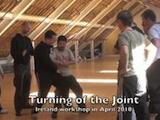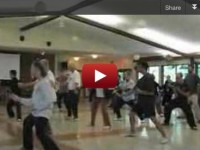Knowledge : Application
By: Cai Shengye. Length: 6 minutes. Language: English. Year: 2009
Chen Style Taijiquan Practical Method yilu and Qinna by Master Cai Shengye.
If you like this, you might try to purchase his full 2010 full video.
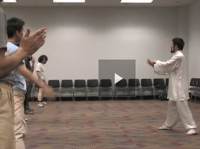
By: Chen Zhonghua陈中华. Language: English英文. Length: 57 minutes分钟. Year: 2005年
Athens, GA, USA.

Yilu Applications 1-4
You can purchase all four DVDs here. For details please refer to the information on Yilu (First Routine) Detailed Applications 1 though 4.
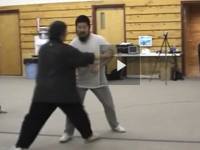
By: Chen Zhonghua. Language: English. Length: 61 minutes. Year: 2004 Part 1 of a 4-DVD set by Master Chen Zhonghua on the applications of Chen Style Taijiquan Practical Method yilu routine.
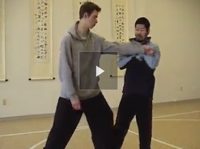
By: Chen Zhonghua. Language: English. Length: 53 minutes. Year: 2004. Part 2 of a 4-DVD series by Master Chen Zhonghua on the applications of Chen Style Taijiquan Practical Method yilu routine.
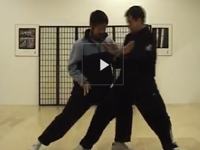
By: Chen Zhonghua. Length: 44 minutes. Language: English. Year: 2004 Part 3 of a 4-DVD series by Master Chen Zhonghua on the applications of the Chen Style Taijiquan Practical Method system.
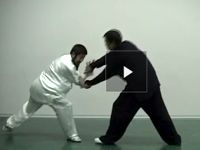
By: Chen Zhonghua. Language: English. Length: 1 hour. Year: 2004 Part 4 of a 4 part video set on Chen Style Taijiquan Practical Method Yilu applications by Master Chen Zhonghua. It can be used while learning the Yilu routine or as advanced learning after one has finished learning the choreography of the form.
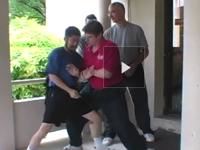
By: Chen Zhonghua. Language: English and Chinese. Length: 36 minutes. Year: 2004
Read more
http://bugu.cntv.cn/sports/other/wulindahui/classpage/video/20100511/100781.shtml
Watch the last quarter of the movie.
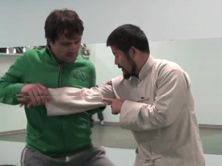 This is a 4-DVD set. By Chen Zhonghua 陈中华. Language: English 英文 Year: 2009 年.
This is a 4-DVD set. By Chen Zhonghua 陈中华. Language: English 英文 Year: 2009 年.
Trailers below
Read more
In Chen Style Taijiquan Practical Method, body functions are very important. This means that each part of the body has its own functions. It is not a case of the whole body working as ONE. That phrase might have been used but the meaning is not literal. Read more
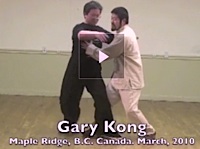
Author: Chen Zhonghua Length: 45 minutes Language: English Year: 2010 Chapters: 7
Feng Zhiqiang Grandmaster Feng Zhiqiang pushing hands with Wang Fengming in Japan in the 1990s.
What is neutralization in Taiji?
We hear the cliche often: “when the opponent uses yang, we use yin.” In other words, when the opponent is strong, we must be weak, or yield. Nothing wrong with that. The logic is sound. It has been accepted by students, masters and grandmasters for ages. Read more
This is a clip of single movement repetition practice led by Grandmaster Feng Zhiqiang. Clip provided by Master Zhang Jiping through youtube.
2008陈式洪派培训班—李老师讲解正反旋圈要点
This is actually a photo-camera recording of an impromptu session with Jay Smith during a session break at a workshop in Maple Ridge in 2008.
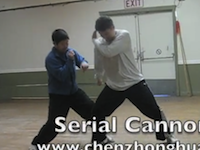
Here is a video on how to maintain your own center while pushing hands and doing the form.
Another way Master Chen teaches the students how to stick to your opponent. Master Chen believes that one of the most common errors in modern Taijiquan training is the use of other energies before “Squeezing” (press) energy is developed. The sequence of the primary four energies are:
Peng as a initial energy
Lu as a change of direction based on Peng
Ji as a step in (further energy) in addition to Lu, and
An as a result of the three previous energies.
Most people perform the four energies in an unrelated manner. They will not have progression in this way.
In the video clip below, Master Chen Zhonghua shows how two people are tied up with rubber cords to experience “snot” (sticking) energy. The aim is to make the lower body move and power up, while making the upper body to adapt and to adhere.
Master Chen this email is my thoughts on taiji and other things you have taught me and the reason I am sending this is because I think I am right and now that I think that I can only see how I am right so the true purpose of this email is to find out where I am wrong so any response will be apprieciated, and please hold nothing back.
First in practicing pushhands I realized what I do is nothing like the form or anything close to that. In fact what I do is more like the opposite. The way I saw this was if I stop in the middle of pushing with John or trying a move and then with him away I recreate the same feeling and intent I had when i was pushing him it is as if I don’t even know how to move. What happens is that my whole body is actually going upwards and even my heels the only things that are not going anywhere are my feet and the spot I was touching him.
This reminded me of how you say that it is about how fast your feet are. When I push my feet are as slow as possible. So in reality all my effort just comes back to me and my opponent does the same thing so it is who is stronger and we are both rediculously weak. I thought up an analagy.
A rocket ship needs a tremendous amount of force to move because what is pushes on moves so easily, pushing on air a rocket ship has to move enough air until the amount of air pushing it is so great that the rocket moves but a gun is much more effient because of the material and the structure. It is natures way that everything finds the easiest path. So the gun is made so that the easiest place the explosion has to go is through the barrel and the only thing in the way is the bullet. The air moves so easily that is why rocket has so much trouble moving. So I realized if you want to move then you need something that won’t budge and if you don’t want to move you need something to move.This concept seems to me as the same thing as laying the tracks. The form is a restriction and until it is no longer a restriction we can’t use it, and the truth, is the way i see it is, that the form or proper way to move is actually freedom and that the way I move right now is the restriction. Horizontal movement versus vertical movement. The best way to move is a straight line because it transfers instantly. But we are not straight lines however Hong said seek the straight through the curve so it can be done.
At the 2008 Hunyuan World Seminiars in GA, USA, I spent several hours one night after the evening class to work with several disciples on taiji fighting.
I will not go into details of what we did, as there is no way to explain it with simple words. We didn’t make any videos of the session either. What I want to discuss here is some of the comments from students. These comments or questions are as a result of the fact that what we did did not APPEAR to be taiji.
- It’s almost the same as praying mantis.
- It’s the same as karate.
- Is taiji this fast?
- Master Chen, you kick is so fast we cannot even respond to it.
As a matter of fact, real taiji IS a martial art. It does not resemble that taiji that we see practiced and taught today. What we normally see is the training set or method of taijiquan. Here is a video clip of a simple teaching session with some applications.
Here is another youtube video that has some elementary fighting techniques.
Taiji Push Hands is always about the state of mind, body, structure, angle, space, timing, etc. It is not an emphasis on responding to the opponent. It is always about adjusting my structure, to sustain my center and stability of the structure. It involves rotating joints, to reorganize my inner body relationships, creating appropriate angles, to occupy the optimal space for my center balance to be sustained, while my opponent’s space and center is taken away.
Another way Master Chen teaches the students how to stick to your opponent. Master Chen believes that one of the most common errors in modern Taijiquan training is the use of other energies before “Squeezing” (press) energy is developed. The sequence of the primary four energies are:
Peng as a initial energy
Lu as a change of direction based on Peng
Ji as a step in (further energy) in addition to Lu, and
An as a result of the three previous energies.
Most people perform the four energies in an unrelated manner. They will not have progression in this way.
In the video clip below, Master Chen Zhonghua shows how two people are tied up with rubber cords to experience “snot” (sticking) energy. The aim is to make the lower body move and power up, while making the upper body to adapt and to adhere.
Note: if you get this post from your bookmark, it is because we have change the website server so there is no chinese content anymore, please update your bookmark to http://practicalmethod.com or create a new one after clicking the home button
In the summer of 2004, Chen Zhonghua took a group of students to visit the Black Tiger Springs Park, where he received his Taijiquan training from Grandmaster Hong Junsheng. This is a brief video clip Read more
These are clips of Chen Zhonghua in 2005 and 2006 demonstrating Cannon Fist and Yilu in Victoria, Push Hands and Fajin in Athens, GA, USA Read more
These are some Chen Style Taijiquan Practical Method push hands and applications demonstrated by master Chen Zhonghua and Sensei Michael Calandra. Michael Calandra is an outstanding NY city Read more
Ed Zolpis
Points to remember re: Circle exercise-
-position of feet is so that when step to the side the feet are approximately 4.5 foot lengths apart with the back of the forward heel on the same line as the front of the toes of the back foot. Read more

